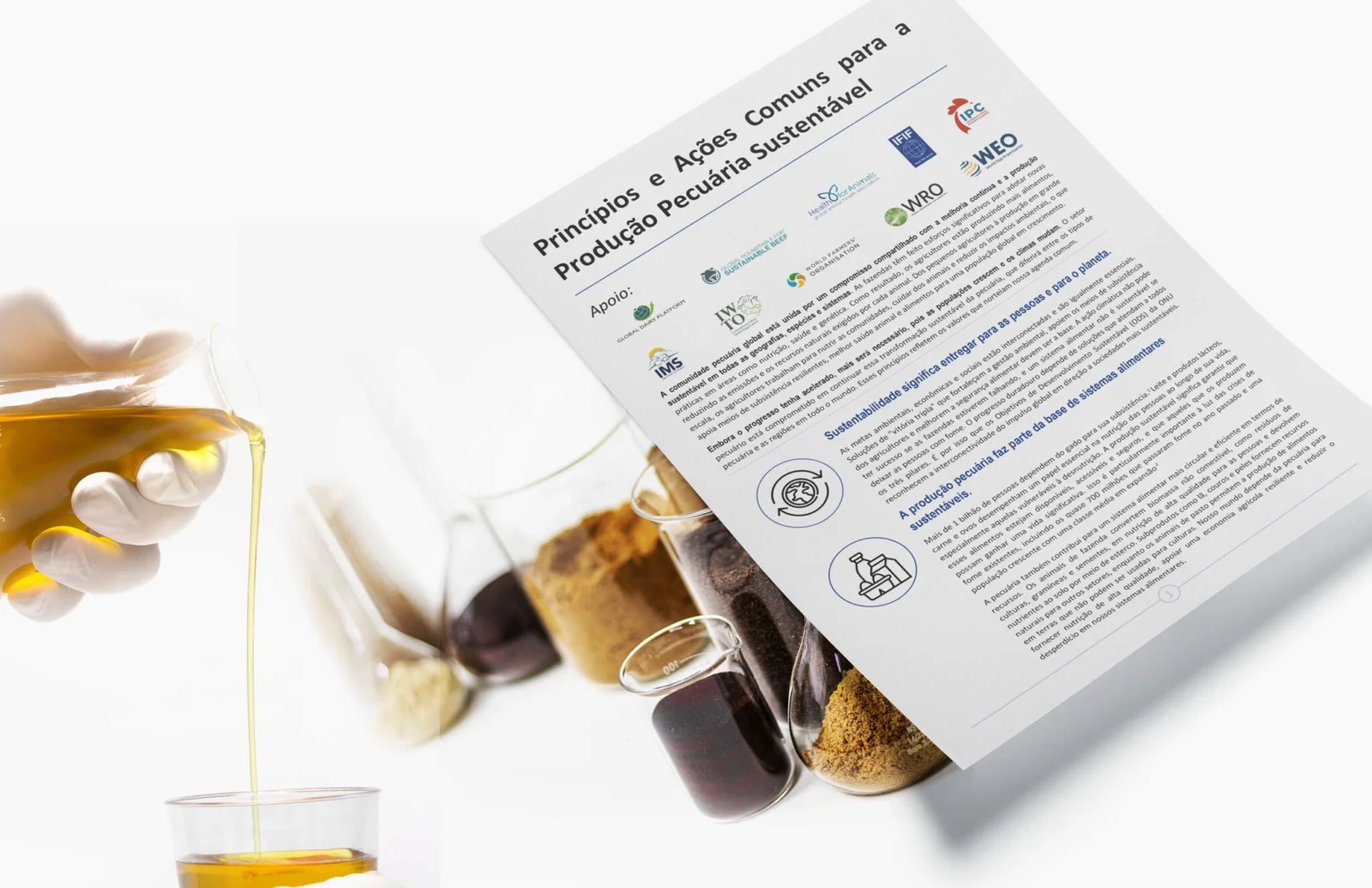
Global livestock production has gained a new benchmark for addressing environmental and climate challenges. The document Common Principles and Actions for Sustainable Livestock Production, published by international organizations with participation from the World Renderers Organization (WRO)—of which the Brazilian Renderers Association (ABRA) is a member—sets out commitments to make the sector more efficient, circular, and innovative. Among the highlighted solutions, animal rendering is recognized as an indispensable practice for reducing waste, recovering nutrients, and strengthening low-impact production chains.
The text places circularity at the center of the sustainable transition in livestock production. By providing a safe destination for millions of tons of animal by-products, the rendering industry transforms what would otherwise be discarded into proteins, fats, fertilizers, and renewable energy. This process mitigates environmental and health risks, reduces greenhouse gas emissions, and lessens pressure on land and water use. Such contributions position the sector as a cornerstone of the circular bioeconomy, essential for livestock production that can ensure food security without expanding productive frontiers.
Another key point of the document is the requirement for measurable and transparent data. The use of standardized metrics to assess emissions, resource consumption, and socio-environmental benefits is seen as essential for enhancing the sector’s credibility with governments, clients, and society. This practice strengthens public policies, improves governance, and supports ESG reporting, which is increasingly demanded by investors and consumers.
The publication also advocates for innovation and continuous improvement, with investments in science and technology to increase efficiency and climate resilience. In this context, animal rendering emerges as a natural link between tradition and innovation, demonstrating how livestock production can evolve while preserving finite resources and reducing its environmental footprint.
For ABRA, the inclusion of the sector in this global document is a strategic recognition. “Animal rendering proves that it is possible to transform environmental challenges into valuable solutions. Seeing this work recognized on the international agenda reinforces Brazil’s leadership in the circular bioeconomy and further highlights the efforts of member companies to align efficiency, innovation, and socio-environmental responsibility,” says Pedro Bittar, Chairman of ABRA’s Board of Directors.
The publication aligns with the United Nations Sustainable Development Goals (SDGs) and global decarbonization targets. For ABRA members, it represents an opportunity to incorporate these principles into institutional communication and ESG practices, projecting internationally the image of a sector committed to the sustainable future of livestock production.
The full document is available at this link.


